Inspiration to expand food choices can come from many places. In my case, my nutritionist suggested I eat more whole grains…but less wheat! In my small world that means rice and maybe oatmeal. No problem. However, today I was in the mood for a broader definition of “grains.”
I’d like to share a well-loved book that I’ve had on my shelf for almost 20 years. It has been helpful in reminding me about the other grain choices I have to choose from. This book, The Splendid Grain, by Rebecca Wood (1997), has been inspiring me to explore other grains for years. There does not seem to be a more up-to-date edition but it is still available on Amazon.
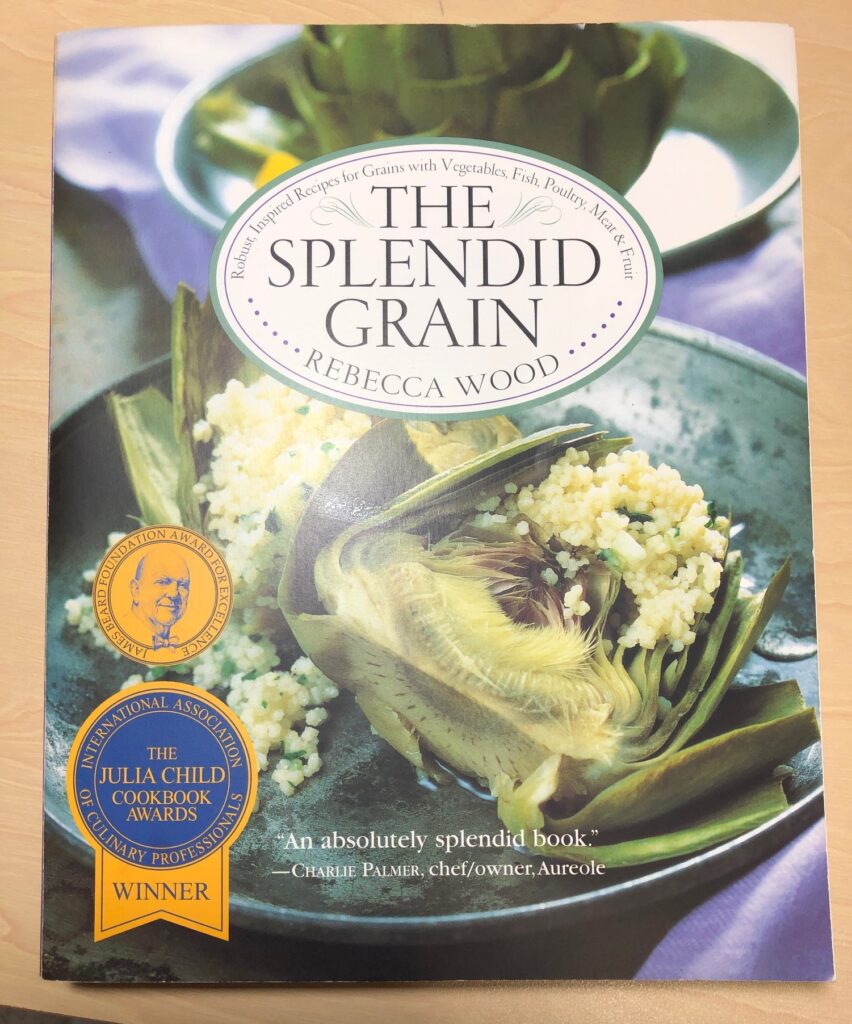
The book is not full of beautiful color pictures (although there are a few of various recipes). Most of the pictures of the grains are black and white. Most of the grains are familiar to me by name, but I wouldn’t know what to do with them. This book gives a great overview of each grain, where it is grown and a few recipes using it. The Table of Contents shows how the grains have been arranged by showing where they came from:
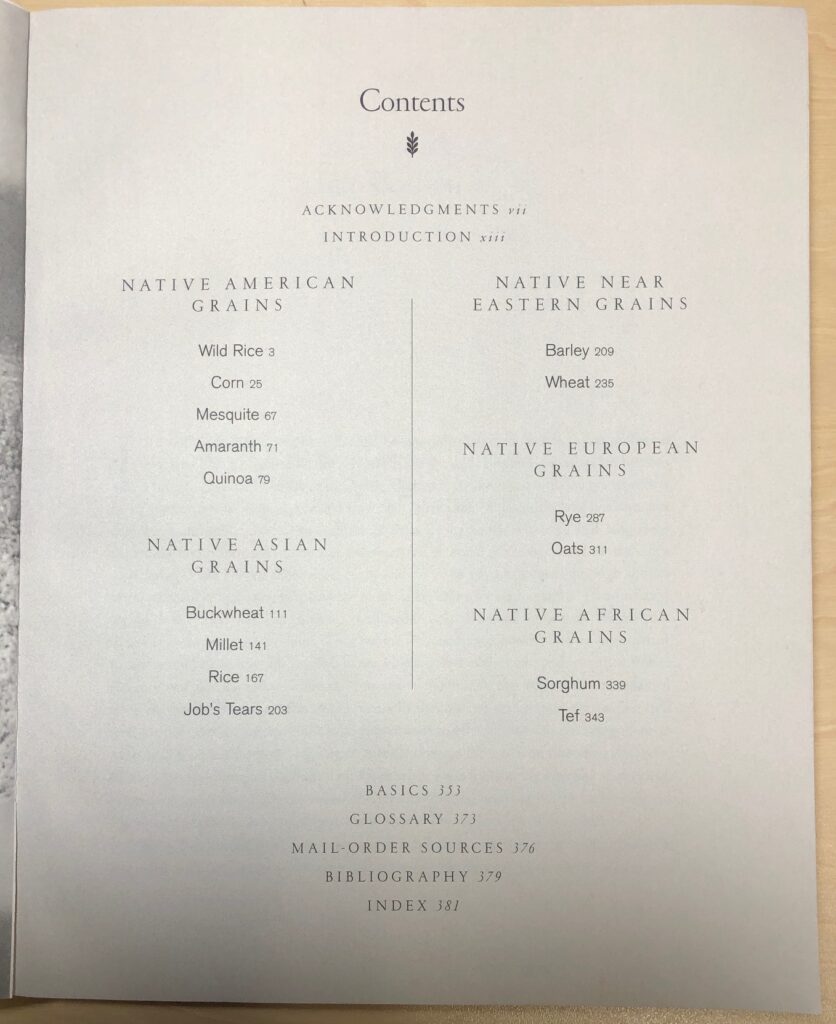
Here are just a few of the grains that I found interesting and will work on incorporating into my menus.
Wild Rice
The author has arranged the grains as shown above, beginning here in the Western Hemisphere and following the sun around the globe. Wild rice is the only truly North American wild grain that’s commercially available. More that 80% of the available wild rice is commercially grown, mostly in California. This hybrid variety is selected for responsiveness to fertilizers, herbicides and insecticides as well as for ease of mechanical harvesting. The wild rice grown in the Great Lakes region, on the other hand, has adapted over thousands of years to the specific lake or river and is often hand harvested from small boats. Each variety has its own unique flavor. I think the story of where it comes from encourages me to use it more often.
Quinoa
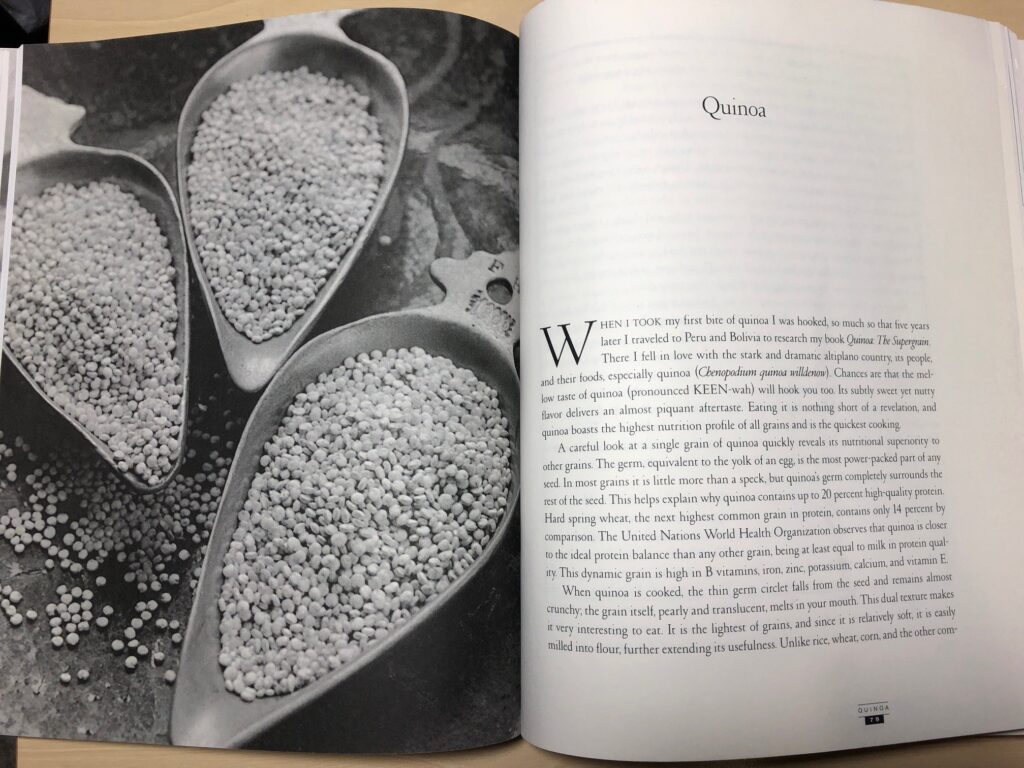
Quinoa has the highest nutrition profile of all grains and is the quickest to cook. According to the United Nations World Health Organization, Quinoa is closer to the ideal protein balance than any other grain. This alone makes it worth figuring out how to cook it. Steamed like rice it’s a quick addition to any meal. Ground into flour, it can enhance the protein content of your baked goods.
This book also provides an assortment of recipes using each grain. I found this one that looked interesting…Quinoa Potato Salad. I’ll have to give it a try.
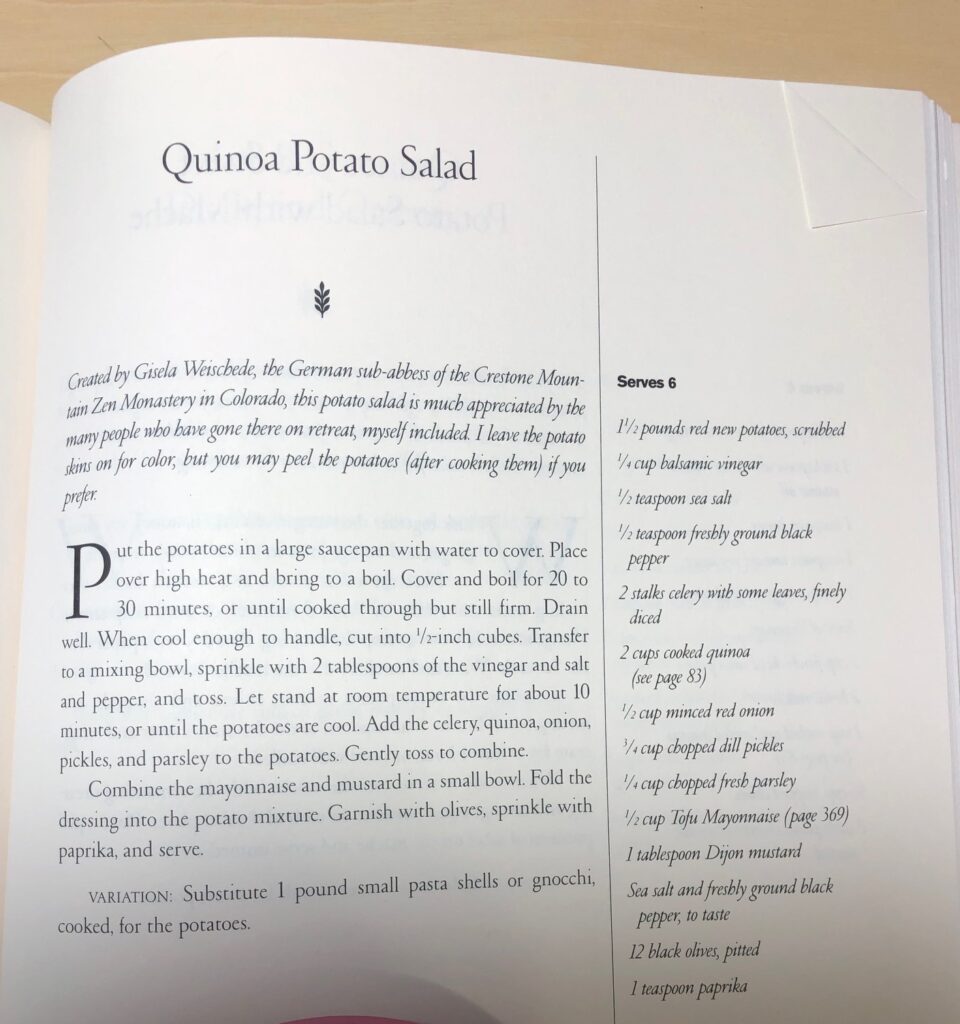
Oats
Oats thrive best in a cold climate. They were probably first established in Central Asia and made their way to Europe. They have always been used primarily as livestock food, and in fact about 90% of all oats grown in the U.S. is used for animal feed. Over the years the popularity of oats in breakfast foods has grown. I often add rolled oats to my favorite bread recipe because it gives a nice flavor and reduces the amount of wheat flour in the bread. I found the recipe below using oats that I think I’ll try:
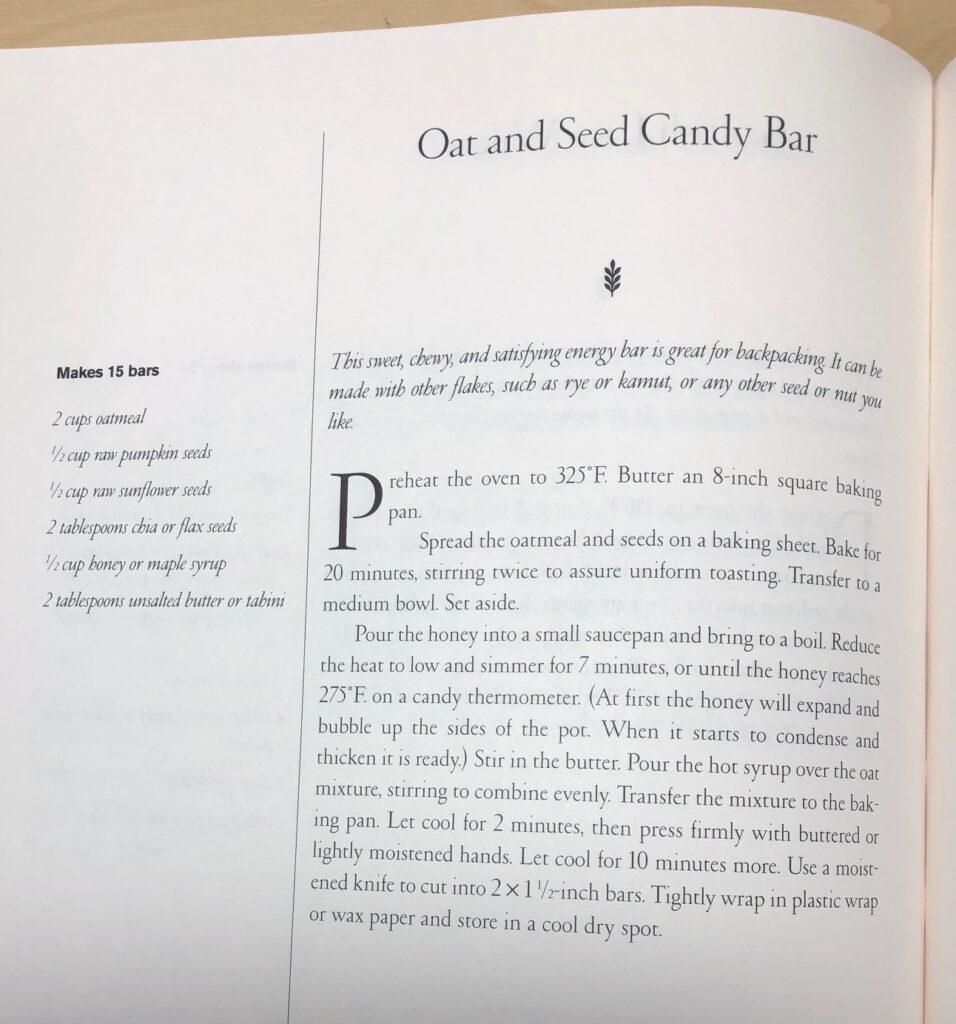
Tef
Another grain that I find interesting is Tef. This tiny cereal grain is grown in the mountains at the source of the Blue Nile. Tef is integral to Ethiopian culture. This tiny grain was almost unknown outside Ethiopia until the 20th century. It is nutritionally superior but is a labor-intensive crop. I have found a source of Tef at https://www.bobsredmill.com/ but I am unfamiliar with the foods and recipes from Ethiopia. I’d like to try it if someone else would cook it properly.
Sources of grains
Many of these grains like wild rice and quinoa are available at our local health food store. With grains like Tef or amaranth I think your best bet is to go online a find a good organic source to experiment with. There is a list of Mail Order Sources at the end of this book, but considering it was published 20 years ago, I suspect they may have changed and there may be others. Try searching again to find new sources.
I found this book to be a good reminder that I can cut back on wheat and still have whole grains in my life. This is a good resource to have on the shelf. Enjoy!
Please comment or email me directly at marykisner@comcast.net.
